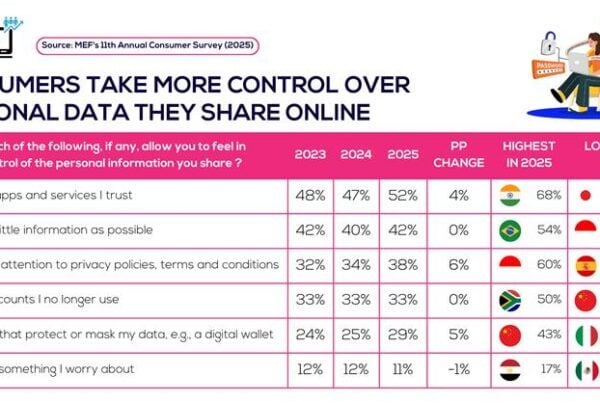In a recent MEF Webinar, Oksana Mikhnova, Products & Services Team Leader at LANCK Telecom Joined MEF’s Nick Millward to outline the shift reshaping enterprise messaging. Her point was clear: the move away from SMS has already begun, marking a real transformation in enterprise communication.
For decades, SMS was unmatched. It worked on every device, across every network, in every country. But its dominance is fading fast. According to LANCK Telecom’s data, one large enterprise has already shifted 1/3 of its authentication traffic away from SMS—20% through Telegram, 10% through WhatsApp, with the rest handled by voice-based solutions like Text-to-Speech and Pin-to-Speech.

This change is driven by cost, reliability, and the rise of alternatives. On premium routes, a single SMS can cost €0.20. For a company sending a million one-time passwords, that’s €200,000 per campaign. Meanwhile, fraud keeps eroding trust. Artificial Inflation of Traffic (AIT) remains widespread, with fake messages wasting millions. And now that channels like voice, RCS, and OTT messengers offer scalable, affordable communication, enterprises are voting with their budgets.
Among these new options, voice has become the most surprising success story. Voice OTPs were once considered unreliable. Early users didn’t understand how they worked, and conversion rates suffered. But with better onboarding and technologies like Pin2Speech and Text2Speech, the picture changed. Today, conversion rates often match or surpass SMS, and voice is cheaper in about 70% of markets.
This evolution also creates opportunities for operators. Flash calls were long associated with grey traffic, where calls bypassed billing and generated no revenue. Advanced anti-fraud systems help operators identify legitimate traffic, apply anti-fraud controls, and turn what used to be a problem into a monetized channel.
If voice has made a steady return, RCS—Rich Communication Services—remains a promise still waiting to be fulfilled. In theory, it offers everything enterprises want: verified sender IDs, rich media, chatbots, and native integration. Supported by Google and Apple, RCS should be the natural successor to SMS. In practice, onboarding can take months, coverage is limited, and pricing remains high. For market participants, RCS is a long-term investment rather than a tool they can use today.
Meanwhile, OTT messengers have become the true disruptors. People spend most of their digital lives inside WhatsApp, Telegram, or Viber, and enterprises follow. These platforms combine global coverage, lower costs, and faster onboarding. Yet, they bring new challenges, such as grey routing: traffic from one messenger сan be rerouted to another, confusing users and damaging brands. Companies may save 90% on costs, but one breach can erase those gains instantly.
The lesson is clear. For operators, the path forward is multi-channel. Embracing and legitimizing new formats turns disruption into opportunity. For enterprises, the priority is transparency and efficiency—one partner managing multiple verified routes without grey routing or inflated bills. For international carriers, this is a chance to connect both sides, offering anti-fraud protection to enterprises and new revenue streams to carriers.
As Oksana concluded, enterprises aren’t leaving SMS because they want less communication. They’re leaving it because they now have better, cheaper, and safer ways to connect with customers.




